This is the second post in my series on how to label your products. In the first post I explained how to label lip balm including how to list your ingredients using the proper terms in the correct order.
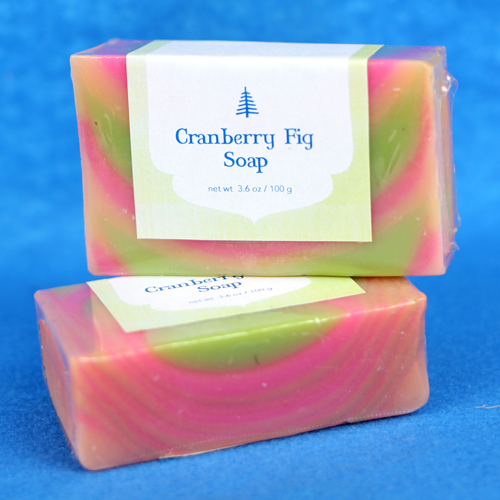
As I mentioned in that post, this is just the bare minimum; there are so many little details that I can’t possibly cover in a blog post. Thus, I highly recommend the book Soap & Cosmetic Labeling by Marie Gale. It is a concise and easy-to-read book, full of examples about labeling cosmetics with a special emphasis on soap. Also, the FDA’s website has many interesting articles and bonus, you can read the law as it is actually written. They also have a free Cosmetic Labeling Manual that addresses all of the basics of labeling.
Soap is a special case when it comes to labeling. The FDA does not require ingredient labeling for soap. That’s right! Nothing.
Talk about a short and easy blog post, see you tomorrow. 😉
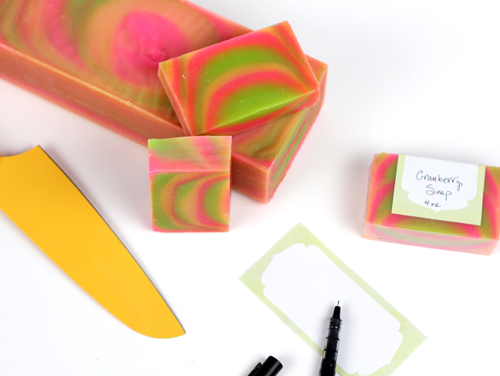
However, you will probably find that most of your customers will want to know what is in the soap they are using (plus, the ingredient list with all those good-for-your-skin oils is a fantastic marketing opportunity). So you may decide to list the ingredients anyway. When you do so, you should follow the rules and list the ingredients completely and correctly. While legally you could list the ingredients however you want, since soap is exempt, you could get in trouble for deceptive labeling practices if your packaging is confusing. For that reason, if you are going to list your ingredients, you should do it right!
There are 2 ways to list the ingredients in your soap. The first is to list what you put in the soap pot, including the lye. Having Sodium Hydroxide in your ingredient list can be difficult when you are trying to sell your soap to people who don’t understand the soapmaking process. As a result, many soapmakers like to avoid putting Sodium Hydroxide on their soap label, which leads to the second method of listing your ingredients. You can put what is in the final soap, which would be glycerin, saponified oils and unsaponified oils with no mention of lye. The problem with this method is that you need to know exactly what order to put the ingredients in and to do that you need to know how much glycerin was produced as compared to the saponified oils. At this time, the only way to accurately do that is to have your soap tested to see what is present in the finished bar for each and every recipe you make.
So what does this mean? I recommend you list your ingredients based on what you put in your soap pot.
On to fun and excitement, the example!
I am going to show how to label the soap I made for the most recent Soap Queen TV episode ‘How to Make Funnel Pour Soap‘
These are the ingredients for the recipe:
- 13 oz Coconut Oil
- 29 oz Olive Oil
- 13 oz Palm Oil
- 4 oz Palm Kernel Flakes
- 8.5 oz Lye
- 20 oz Distilled Water
- 4.8 oz Cranberry Fig Fragrance Oil
- 1.5 oz Sweet Almond Oil
- 1/2 teaspoon Bubble Gum Neon Colorant
- 1/2 teaspoon Tangerine Wow! Neon Colorant
- 1 teaspoon Fizzy Lemonade Neon Colorant
- 50 drops Liquid Blue
- 1/2 teaspoon diluted Green Apple LabColor
The label according to the 6th edition INCI guidelines would read as:
Olive Oil (Olea Europaea), Water, Coconut Oil (Cocos Nucifera), Palm Oil (Elaeis Guineensis), Sodium Hydroxide, Fragrance, Palm Kernel Flakes (Elaeis Guineensis), Sweet Almond Oil (Prunus Amygdalus Dulcis), Bis(Glycidoxyphenyl)propane/Bisaminomethylnorbornane copolymer, Aluminum Hydroxide, Red no. 28, Red no. 22, Yellow no. 10, Glycerin, Ultramarine Blue, Green 8, Green 5, Yellow 5, Phenoxythanol, Phenoxyethanol, Benzoic Acid, Dehydroacetic Acid
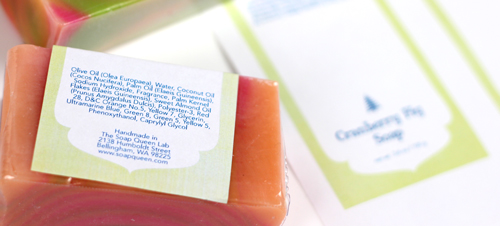
One more treat, we made label templates (that match the lip balm labels – of course) that you can download for your own soap. Find them here.
So go forth and label … properly.
If you’re still looking for more resources, check out this great roundup of FDA Cosmetic law links on the Indie Business Network.

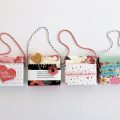
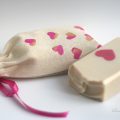
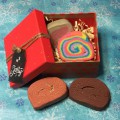
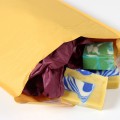
when listing colors the ingredient list is long from manufacturers there isn’t enough room on labels especially if you use several colors.
Hi,
I know this is slightly off topic, but I am trying to figure out how to label my body wash and shampoo. Both fall under the soap exemption for the FDA, but I cannot figure out how to label the major ingredient of castile soap. Any ideas? Should I list all of the ingredients in the soap?
If you want some inspiration for designing your own soap labels check these out:
http://www.onlinelabels.com/CustomerCreations/Search/soap
Hello,
Please advise me how to label my products using neon liquid dyes. I know that they are not considered cosmetic grade colors I am not sure how to label them.
Thanks,
Denise
You need to ask your vendor for the INCI for the product. And, small side note, if the product isn’t cosmetic grade, I don’t suggest using it in soap.
This post is almost 1yr old. Does the FDA now require soap to be labeled??? I am giving my 1st CP batch to friends & family for testing & opinions, & would like to label the bars. 🙂
~Nickie~
Good morning, Nickie!
Currently at this time the FDA does not require you to label a bar of soap, but we always suggest to because your customers typically want to know the ingredients that are in their bath and body products.
-Becky with Bramble Berry
i love the lables you used on this soap! where can i find them?
Hi Kim! You can find the labels we used on the soap in this blog post on Bramble Berry’s website. And the best part about them? They are free!
Soap Label Template: https://www.brambleberry.com/Product.aspx?ProductId=5176&CategoryId=306
-Becky with Bramble Berry
SOme big soap companies (Dove, Ivory, Dial, Etc.) use the words Sodium Palmate/Tallowate on their soap. Is this acceptable for labeling our products?
Hi Jamilla!
When you are labeling your cold process soap we normally suggest going with the INCI (International Nomenclature of Cosmetic Ingredients) terms for the products, but using Sodium Cocoate (Saponified Oil of Coconut) or Sodium Palmate (Saponified Oil of Palm) would be acceptable as well. =)
~Becky with Bramble Berry
Thanks for the great articles!
I have one question about glycerin content. If we can determine molecular composition of all of our product inputs, shouldn’t we be able to calculate final-product glycerin levels? I may just be missing something obvious here..
Thanks!!
In theory, yes, but the amount of glycerin formed varies by the oil used, by the heat of the process and the superfat so with all those variables, I’ve not seen a formulaic way to do it but if you come up with one, I’d love to know about it. It would answer a lot of questions. =)
I for a template the other day for putting together a label for soap based on Avery Labels (for Inkjet or Lazer printers). I thought it was from you but may have been mistaken since I can no longer find it. Can you help?
Also I would like to have a resin soap stamp made from the design on my labels and a business card, but don’t know where to get them at so that they are all the same and not have to pay 2-3 times for “set up”.
Thanks!
I don’t think that was us but it’s a great idea =)
Stamps – have you seen this really great DIY tutorial on how you can make your own?
http://duhbe.com/blog/2011/04/diy-custom-soap-stamp/
I watched your episode on funnel pouring and it was amazing. I love watching your shows they are so helpful. Thank you so much.
Thanks Jennifer! I am so glad that you found the video helpful. That soap was incredibly fun to make =)
Question…what if you are using natural colorants? How would you go about listing those?
TIA
List your natural ingredients at the end like you would a normal colorant.
Courtney from Bramble Berry
I made a coffee and goat’s milk soap, using triple strength coffee and goat’s milk in place of the water. How would you label something like that? Would i just say, “Coffee”?
Question? Where did the preservative come in with you label. (Phenoxythanol, Caprylyl Glycol) Was this in the color or scent?
Thanks
That’s a great question since soap doesn’t need a preservative. The preservative is in the Green Apple Labcolor.
Courtney from Bramble Berry
Here in the EU we have to label the product according to what it is now eg a soap made with olive oil and sodium hydroxide becomes sodium salts of olive, and should be labelled as sodium olivate, because that’s what it is.
Lye is never mentioned in the label, not because anyone needs to hide it, but because it is not present in the finished soap (or shouldn’t be!), and neither is olive oil.
Hi Angela,
I am sorry to say that this is outdated. Meanwhile we have to declare all the initial ingredients, i.e. instead of sodium olivate you declare both olea europaea oil and sodium hydroxide.
But still it is amazing how much effort we have to put on labelling soap in the EU, while in the US apparently this is not needed at all…
Yes, it is interesting that soap is exempt. But nothing else is. So liquid soaps, lotions and all of that still require careful and accurate labeling.
As I mentioned in the post, that is an option in the US as well. However, you must be able to accurately list the ingredients in the correct order which isn’t really possible to do unless you have your soap tested to find out how much glycerin vs. saponified oils are present. Fortunately, we have more than one option in the US for those that are just starting out and aren’t able to afford to have their soap tested for that type of ingredient listing.
I have seen many labels with just “colorants” or “mica” listed in the ingredients. Is this acceptable or do you have to list every color you add in INCI form? Thanks for the great posts!
No, that isn’t correct. You must list what is in the color. And while mica is an ingredient in micas – if it has any sort of color it will also have an oxide or a dye of some sort. There are people that are sensitive to certain colors, so listing everything allows them to know if your soap is safe for them to use or not.
I always label my soaps using the first method (including sodium hydroxide) and avoid saying “saponified oils of…” I actually think that’s a cop out with a bit of spin and am kinda surprised to see so many large and well established soapmaking companies using that method. I’m just a purist and would rather not use that sort of marketing trickery (like saying naturally occurring glycerin.) I’m sure the rationale is marketing appeal but it just contributes to lack of understanding. Can you tell I’m a bit opinionated about this? 🙂
Yes, it might make it more difficult to explain the ingredient listing – but in the long run you have a bar of soap with integrity.
I’m trying different ways of labeling that don’t include plastic. I live in an area where eco is first. Shrink wrap is not an option. I was wondering if a wax coated paper might be an alternative–almost like a fry bag from a fast food place. Besides, shouldn’t CP soap breathe?
After the soap is cured, you don’t need to let it breathe as fully anymore. That said, a shrink wrapped bar versus a wax paper bar? I’m sure the wax paper wrapped bar will last longer in terms of getting DOS (Dreaded Orange Spots). And yes, the wax paper will work great for wrapping bars! And, with a nice label on it? It would look fantastic =)
I love these, but most of mine have bumpy tops lol
LOL! Texture is great =) It makes an interesting bar of soap.
I appreciate this post! Canadian soapers should be aware that the laws are different here, and soap is considered a cosmetic. We MUST label.
Oooooh, good one Karen! Thanks for the reminder. I get a little too US-centric =)
Thank you for this post. I have been really working on this over the last few days.
Labeling is never fun but good news! You just have to do it once for your great recipe so make sure you love it before you sell it to save yourself some labeling time =)